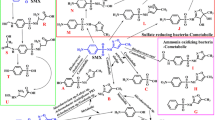Abstract
In recent years, substantial progress has been made towards understanding the modes of action for the specific inhibition of autotrophic NH3 oxidation. This has included demonstrating that NH3 monooxygenase (AMO) has a broad substrate range for catalytic oxidation, and the inhibitory effects of many compounds are due to competition for the active site. Other compounds, such as acetylenes, are oxidized by the normal catalytic cycle of AMO to highly reactive products which covalently bind the enzyme causing irreversible inhibition. Substantial evidence has shown the important role of Cu in the activity of AMO, and indicated that a large class of compounds containing thiono-S inhibit AMO activity by binding with Cu within the active site. Heterocyclic N compounds form another important class of nitrification inhibitors with little known about their mode of action, although evidence suggests that their inhibitory influence is closely related to the presence of ring N.
Similar content being viewed by others
Author information
Authors and Affiliations
Additional information
Received: 21 July 1998
Rights and permissions
About this article
Cite this article
McCarty, G. Modes of action of nitrification inhibitors. Biol Fertil Soils 29, 1–9 (1999). https://doi.org/10.1007/s003740050518
Issue Date:
DOI: https://doi.org/10.1007/s003740050518




